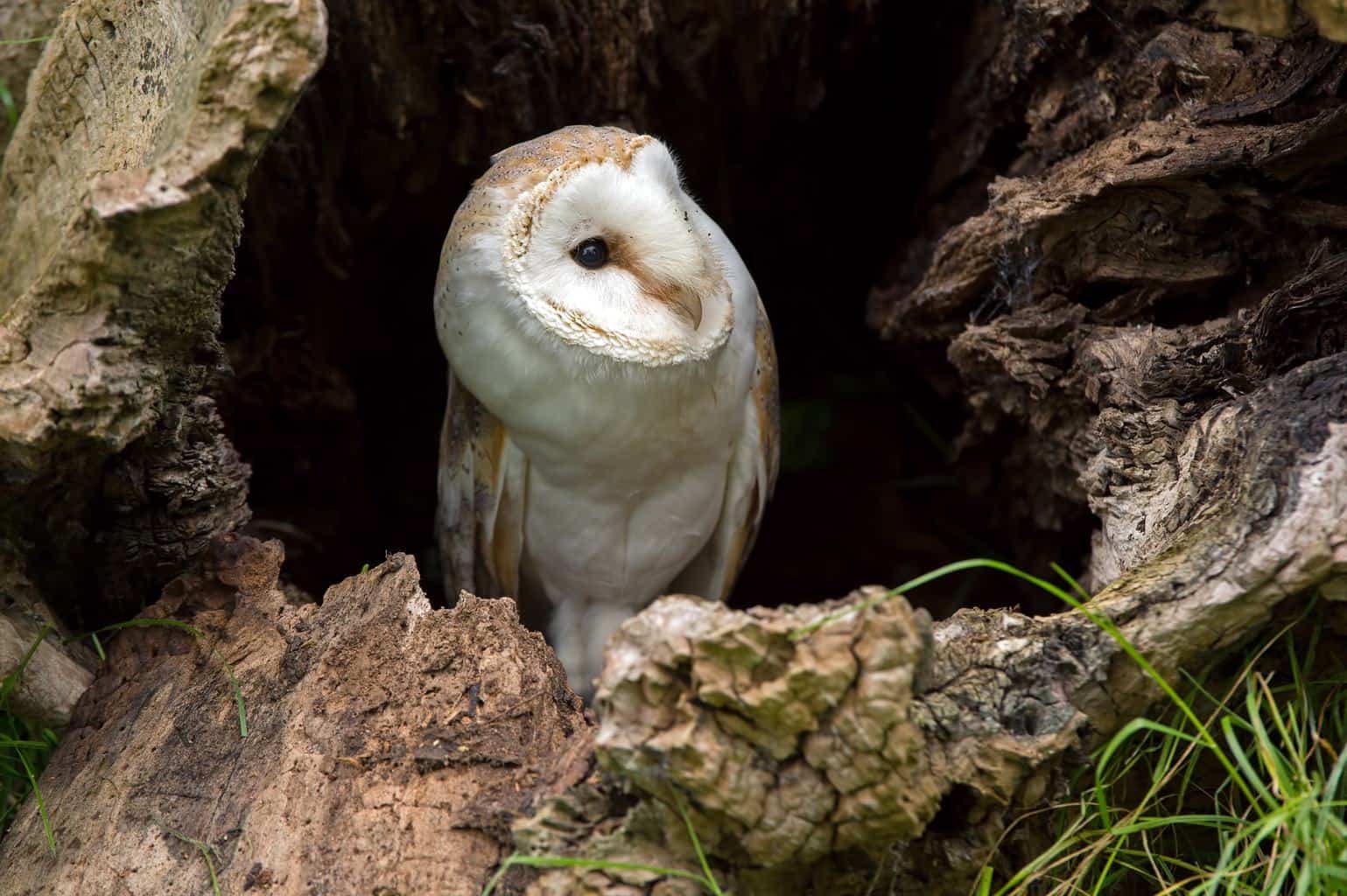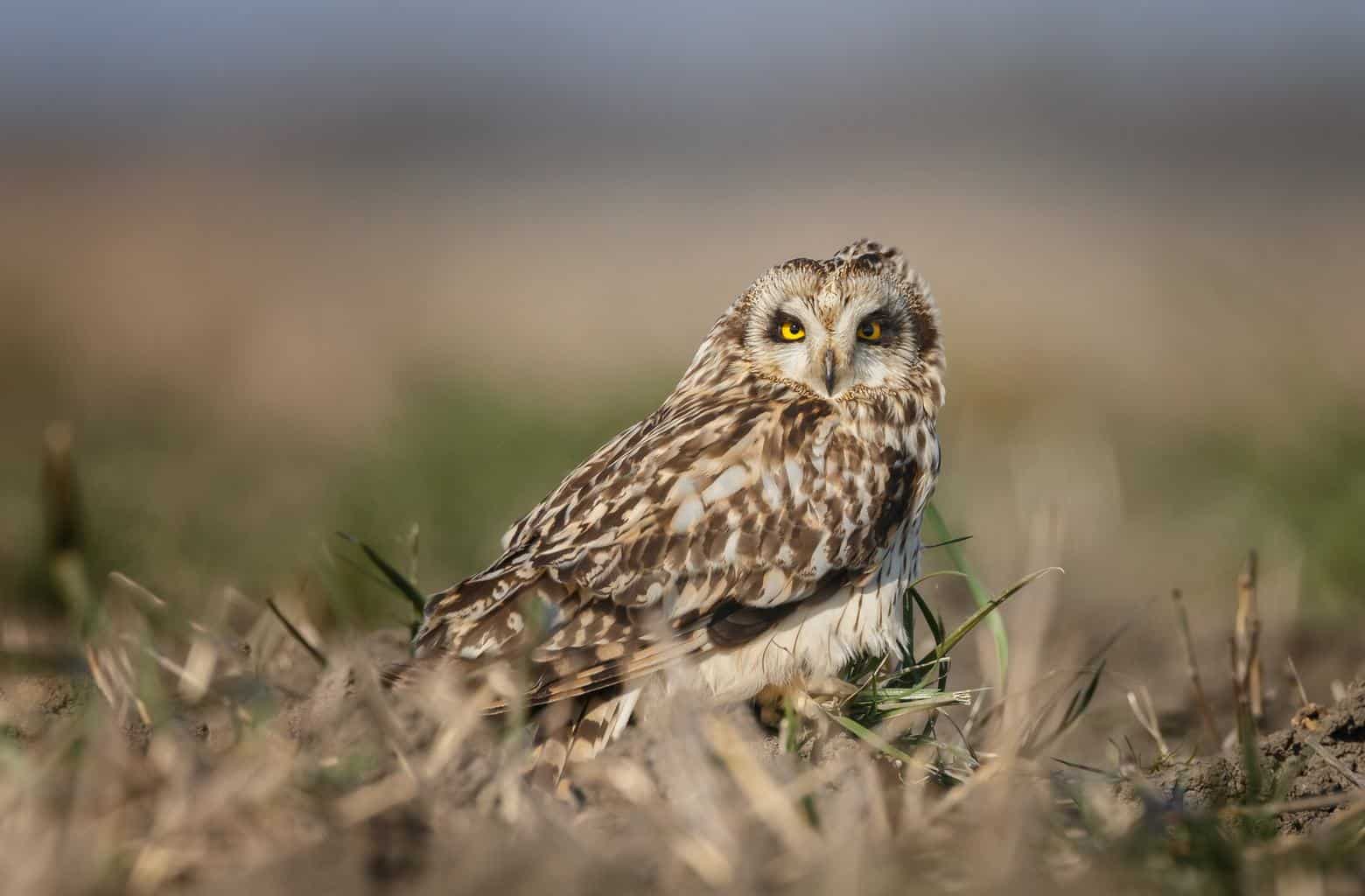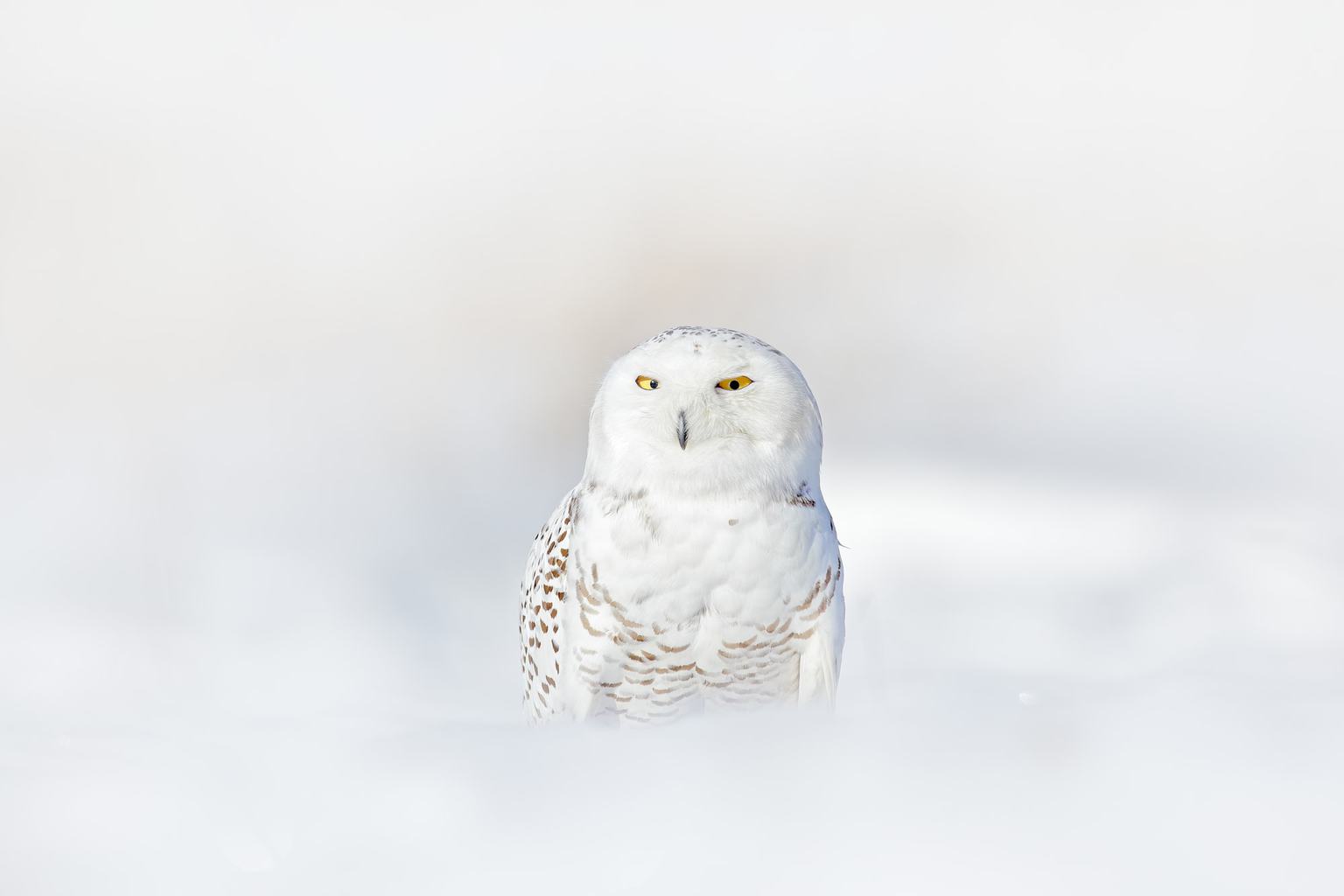Home to 45 national parks and several owl species that have prospered there for centuries, the state of Virginia is one of the best places in North America to visit if you’re an owl aficionado.
In Virginia, owls can find various natural and artificial nesting spots. These beautiful animals have been spotted since before Europeans came to Virginia. Their distinct hoots and sharp, intimidating stares were considered bad omens in Native American culture.
Virginia is home to eight owl species that are an absolute pleasure to see. In this article, we shed light on all eight species of owls in Virginia and their range of habitat so that it’s easier for you avid bird watchers to spot them, so stick around.
Eastern Screech Owl

- Scientific name: Megascops asio
- Length: 6.5-10 inches
- Weight: 0.25-0.54 pounds
- Wingspan: 18-24 inches
This owl is a rare find. Also known as the Shivering owl, its small body size may cause you to mistake it for an infant owl.
Contrary to their name, they don’t make screeching calls, but rather a soft and sorrowful neigh going up and down in scale. This is a common sound heard in the spring and fall during their mating season.
The females are a bit bigger than males, yet remain relatively small in size. Both genders assume a red or grey color or anything in between. The grey feathers help them camouflage against tree bark and therefore they can be very hard to spot in dense forest surroundings.
These owls stay in Virginia for the entire year and can be found most commonly in a tree cavity in mature forests, specifically near streams, small woodlots, or even small towns.
This species of bird is a great nocturnal hunter, with fringed flight feathers that allow it to gently descend onto its clueless prey with minimal noise.
Barn Owl

- Scientific name: Tyto alba
- Length: 13-15 inches
- Weight: 0.6-1.2 pounds
- Wingspan: 31-38 inches
The Barn owl has an interesting heart-shaped face that makes them hard to miss. They earned the name “Monkey Owl” for this feature. Their underside has white plumage and their legs are long.
These owls can hiss, bark, or trill when calling. And like most owls, the Barn owl possesses great low-light vision capabilities. This allows it to hunt at night with ease.
However, this isn’t this bird’s only way to locate prey; this owl boasts unsurmountable hearing capabilities. They can listen for the tiniest sounds from voles and mice, and swiftly hunt them with the aid of their silent, light feathers. When they’re on the hunt, it’s hard to hear them, even on a quiet night.
The species is commonly found in Orange and Culpeper counties. They usually nest inside hollow trees or in cavities on river banks, but they’re also able to use artificial structures for nesting, like abandoned barns, church steeples, and even nest boxes.
Great Horned Owl

- Scientific name: Bubo virginianus
- Length: about 22 inches
- Weight: 0.25-0.5 pounds
- Wingspan: 36-60 inches
These are large owls with horn-like tufts of feathers on their heads. They have a menacing stare and a classic hooting voice. They can be found in wetlands, grasslands, and other semi-open habitats where they regularly nest.
They go for snakes, raptors, rabbits, and sometimes larger animals like porcupines when hunting. They have a deadly grip that can destroy a prey’s spine, which is why they’re called “the tigers of the sky.”
These owls, like some others, tend to sometimes swallow their prey whole, especially when it’s a small catch. When this happens, the entire animal is swallowed including its fur, bones, nails, and other indigestible material. Great Horned owls may regurgitate this undigested mixture in the form of a pellet. When you spot these oblong pellets on the ground, it’s a good sign that an owl nest may be around.
Towards the end of the year, this widespread bird species starts mating, usually with the same partner. If you hike during the night in the woods, listen for their mate-bonding hoots, with the females being slightly higher-pitched.
These owls have bright yellow eyes that are fixed in their sockets and their feathered bodies are usually a mix of mottled brown, grey, and black.
Barred Owl

- Scientific name: Strix varia
- Length: 16-25 inches
- Weight: 1.3-2.0 pounds
- Wingspan: 38-49 inches
This is a popular species of owl that can be seen in swaps, uplands, and everywhere in between. They hunt at night and usually target smaller mammals like rats, mice, and squirrels. They’ll occasionally hunt snakes and other invertebrates.
These owls are also used to hunting fish from water surfaces but they’re not water birds. They’re also considered to be some of the friendliest owls around people. They’re especially noisy between late January and early April.
These birds are relatively solitary and only spend time with their families during the breeding season months and while raising the young.
They have round heads and dark eyes. Their feathers are light brown and they have a yellow beak. They get their name from the “barred” feather pattern that can be seen on their plumage.
They’re famous for the classic sound of their haunting, baritone night call that reverberates towards the end. It has been interpreted by enthusiasts as “who cooks for you, who cooks for you-all” which is a mnemonic that perfectly fits the call’s pattern.
Short-Eared Owl

- Scientific name: Asio flammeus
- Length: 13-17 inches
- Weight: 0.5-1.0 pounds
- Wingspan: 36-41 inches
The Short-Eared Owl is a mid-sized mottled brown variety. Their fluffy feathers have been described as being “flame-colored,” hence the Latin name flammeus. They flaunt their false ears when they want to intimidate an enemy or prey. They have yellow eyes and a dark beak.
These owls prefer open fields, grasslands, and meadows. You may even spot them at an airport, especially during dusk or dawn.
They breed from March through June and they build their nests on the ground in these open areas. The only cover their nests have is long grass. This may seem like a strange way to place their nests, but they combat predators by hopping away and pretending to be crippled, much like killdeer.
Unlike many of their cousins, these owls hunt during the day since they prefer voles, which are most active then. Their calls are rare, but when they do make a sound, it’s similar to a cat’s scream. During courtship, the male flies close to the nest and flaps its wings below its body.
Long-Eared Owl

- Scientific name: Asio otus
- Length: 12-16 inches
- Weight: 0.4-0.7 pounds
- Wingspan: 34-40 inches
Much like the Short-Eared owl, they also flaunt their prominent feather tufts when they’re alarmed. The Long-Eared owl’s brown feathers are darker and marked with pumpkin-colored face patches and yellow eyes.
Their call is typically a short “whoop” that’s repeated every few seconds rather than a hoot. These “whoops” range from cat-like screeches to bark-like sounds. They can be found in communal roosts and groupings, which is quite a lucky find!
This species is strictly nocturnal, and can rarely be seen during dusk or dawn. You’re more likely to find them in areas of thick vegetation for nesting mixed with more open spaces for hunting. You’re also likely to spot this frequent winter resident during its migration.
Northern Saw-Whet Owl

- Scientific name: Aegolius acadicus
- Length: 7.1-8.3 inches
- Weight: 0.4-0.7 pounds
- Wingspan: 16.5-18.9 inches
This elusive bird is a rare find mainly due to its small size. They’re about the size of an American robin with cute faces. They have yellow eyes and light brown feathers with white streaks. Their heads are disproportionately large relative to their bodies.
These owls have a special facial feature in which their white eyebrows connect in a “Y” shape to their beaks. These beaks are hooked to tear apart meat. Couple that with strong talons, and you get an exquisite predator. Their call is a continuous beeping sound.
They are called Saw-whets because of the sound they make, which is similar to a saw being sharpened on a whetting stone.
These owls eat deer mice. They also eat small birds, voles, shrews, young squirrels, and large insects. A great way to confirm their sighting is if the birds around are getting fussy or flying away.
Typically, the male owl chooses and defends a territory where he comfortably hunts and starts calling for his female partner. The roosting Northern Saw-whet owl pair works together to raise their young. The male brings all the food that the female needs while incubating the eggs.
Snowy Owl

- Scientific name: Bubo scandiacus
- Length:21-28 inches
- Weight: about 3.6 pounds
- Wingspan: 50-57 inches
It’s considered a rare event to see the Snowy owl make a winter appearance in Virginia. This uncommon winter visitor has unpredictable migration patterns and makes trips away from the Arctic tundra to avoid the colder winter up north.
This beautiful bird is quite a large owl. It is famous for its round head, white feathers with black speckles, and “frowny” yellow eyes. Its apparently bulky body is really mostly feathers and its plumage colors provide the perfect camouflage on the frozen Arctic tundra that is its natural home.
They’re usually found close to the ground or water. These owls have great eyesight, but also greatly depend on hearing for their hunting expeditions.
Unlike most owls, this variety of bird is active during the daytime. They have a flexible diet and love feeding on voles and other small rodents during Virginia’s mild winter when they are away from their favorite food: tundra lemming. A male and female usually mate for a lifetime.
Conclusion
Virginia has a rich collection of owl species that you can spot. Some will be an easy catch, while others are like finding a pot of gold!
If you’re looking to find your next owl, it’s usually recommended to start your expedition at night since most of them are nocturnal. And listen carefully for their hoots to try and locate them.

